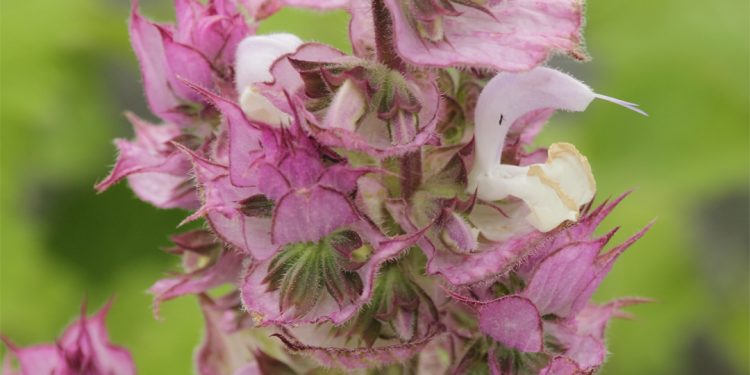A biennial, up to 1.2 m (4 ft.) tall, it has a large basal clump of broadly ovate grey-green leaves, and in its second year a tall, branched, flower spike of silvery, lilac-blue and pink two-lipped florets. The whole plant has an unpleasantly overpowering scent, but it is showy and decorative in the border.
History and traditions
The specific name, sclarea, comes from clarus, meaning clear, and is also the origin of the common name clary, a corruption of “clear eye” which refers to an old use, mentioned in many herbals, of clary sage as a lotion for inflammations of the eye. It has long been a flavoring for alcoholic drinks as it remains to this day and clary wine is said to have been a 16th-century aphrodisiac. In the 19th century it was sometimes used as a hops substitute, to make beer more heady and intoxicating. In conjunction with elderflowers, it provided German wine producers with a way of adding a muscatel flavor to Rhenish wine.
Habitat/distribution
Native to southern Europe found on dry, sandy soils.
Growth
Grow in free-draining, but reasonably moist and fertile soil. Propagated by seed sown in spring or autumn. Often self-seeds.
Parts used
Leaves fresh or dried, essential oil.
Uses
Medicinal
Infusions of the leaves are used as lotions for cuts and abrasions, and as a gargle for mouth ulcers. Sometimes recommended to be taken internally in small doses for promoting appetite.
Aromatic
Essential oil is used to flavor vermouth and liqueurs, and widely used in commercial soaps, scents and eau-de-Cologne.










